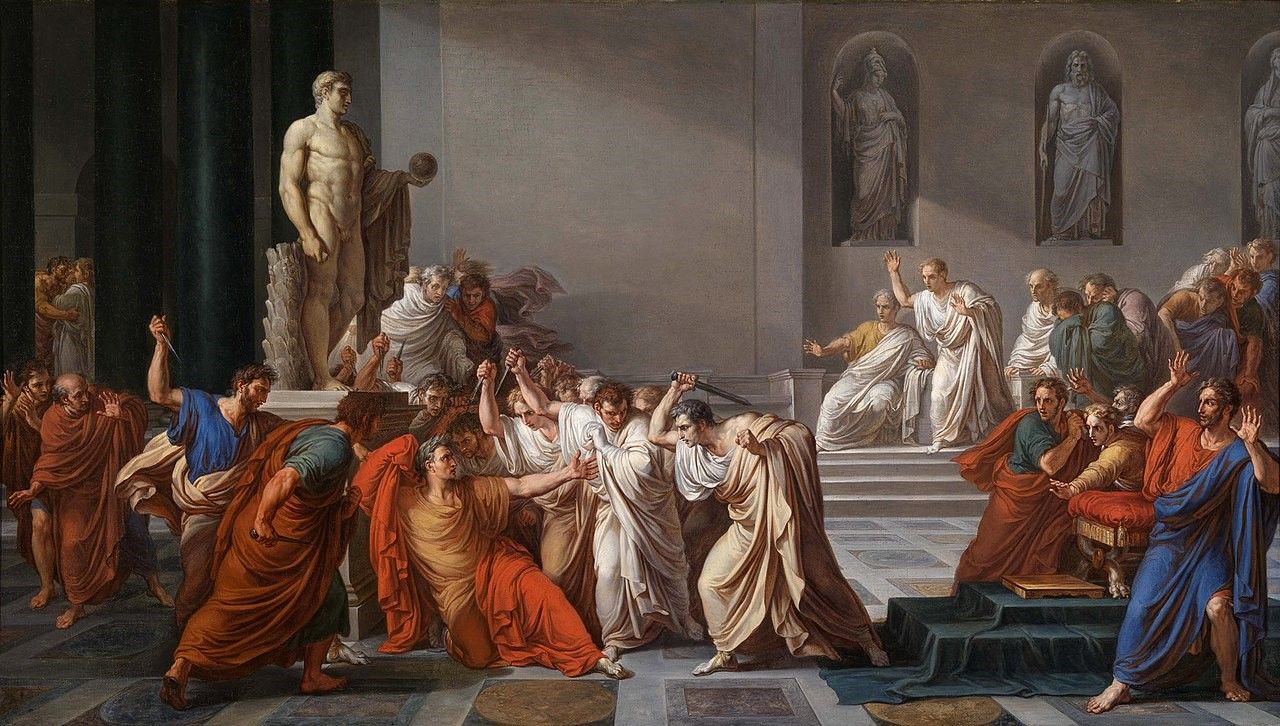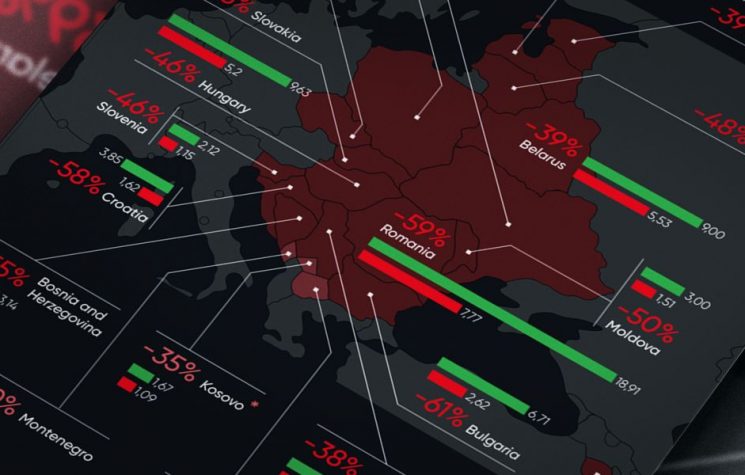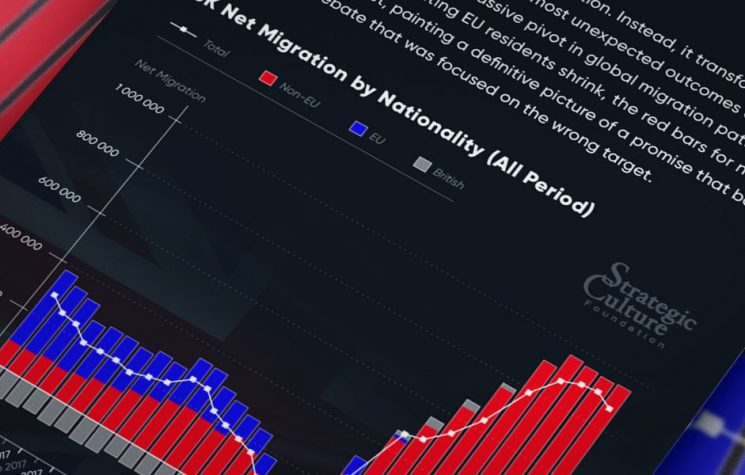The new left cannot see Napoleon or Caesar as progressive, as Parenti or Gramsci did.
Join us on Telegram![]() , Twitter
, Twitter![]() , and VK
, and VK![]() .
.
Contact us: info@strategic-culture.su
Trump’s ICE agents raid cities, the border remains closed, his court picks overturned Roe, and the Navy focuses on Venezuela and Colombia while the State Department pressures Europe, Asia, and the Middle East. Meanwhile, Americans face high food and housing costs, chronic underemployment, and ongoing job market despair. Daily headlines like the shutdown, healthcare, Epstein, often pivot attention in circles, while Trump’s base questions his closeness to Israel. Mainline Democrats and the left see these as signs of MAGA authoritarianism, invoking Gramsci’s Caesarism superficially, yet the concept still helps frame this moment.
After months of claims that MAGA is dead, only ten months into the 47th administration, Trump walks a thin line. His populist base increasingly collides not just with visible opposition but also with the Crassian figures within his coalition. He has tried to deal, flatter, steer, entice, punish, and cajole them onto his path.
To pick up from ‘Trump is ‘No King’, but is he a Caesar? The return of the Populares’, we want to understand what Trump as a phenomenon is and is not, and what it must be in order to succeed. And for this, one must first understand Caesar. To understand Caesar, one must understand the crisis which then, as now, led to a clash of the titans, our elites, and how the mechanics of social change operate functionally, aside from ideological narratives.
Is Caesarism, or perhaps in the sense of Eco’s Ur-Fascism, what we will term ‘Ur-Caesarism’, necessarily reactionary or regressive, or could it be progressive or something else? Will the Trump project succeed or fail, and along which path?
Marxian, structuralist, post-structuralist, and Frankfurt School discourse largely shape the left’s thinking, to varying degrees of diligence. In a way contrary to Gramsci, and rather in line with the new left’s transvaluation of values and redefinition of the left, their historiography frames every strong leader as either a fascist stabilizer of bourgeois power or a pragmatist usurper of revolutionary potential, and at the very least as a sexist and racist figure. The underlying assumption is that one bourgeois power equals another, or that there was a revolutionary potential in the first place to usurp.
This reductionist framework, inherited from a vulgar reading of Gramsci’s concept of Caesarism, rests on a Nirvana fallacy, treating something tangible as deficient compared to an ideal without historical reference. This is a serious error that misunderstands popular power, the mechanics of systemic transformation, and human nature itself. What is often left out is Gramsci’s view of Caesar and Napoleon as a form of progressive Ur-Caesarism, as so much popular focus is on the reactionary form of Caesarism which he labels Italian Fascism and Mussolini.
We are not looking for one-to-one mirrored analogies, but rather understanding Caesarism and Trump through a general model. This does not predict that Trump will be assassinated (though there has been at least one very serious attempt), or that he will not be pulled in the final analysis in the direction of the world-view and end-game of the old guard Optimates. In that light, it is necessary to view figures like Thiel, Musk, et al, not as Populares themselves by any stretch, but rather as opportunistic figures like Crassus during the First Triumvirate. And what’s more, among these oligarchs, we may still find a Pompey and an Optimate guard within the historical bloc, not simply Crassian opportunism.
The great contribution of the Marxist Michael Parenti
Michael Parenti contributes significantly to this question in his groundbreaking work on Julius Caesar, in ‘The Assassination Of Julius Caesar: A People’s History Of Ancient Rome’, (2003). He concludes in concurrence with Gramsci that the historical Caesar was not a reactionary figure, nor a ‘dictator’ in the contemporary connotation of the term, but rather a genuine populist who advanced the material interests of the plebeian and proletarian masses against the entrenched power of the Optimates; the oligarchic faction that controlled the Roman Senate and sought to maintain their monopoly on land, wealth, and political power despite that their system had led to strife, stagnation, and ruin. The Optimates had done so even as Rome had grown unmanageable through their horrendous policies and attitudes, and was leading to certain destruction for the whole of Roman society.

“The Death of Caesar” — Vincenzo Camuccini, 1798–1806
Of extraordinary importance here is the method of attack taken by Caesar in his rise to power. Influenced and inspired greatly by Gaius Marius and his championing of the cause of the Populares, Caesar was related to Marius through family marriage. Caesar remained quiet about his affinity for the Populares and proceeded stealthily into mainstream Senatorial Roman politics as part of the Optimates power group, only to work his Populares agenda, the reintroduction of his version of a type of Marian reform, and so on, through the power structures of the Optimates group, after his consolidation of power.
The parallel here to Trump, coming through not the ostensibly ‘populist’ Democrats, but through the Optimates power party in American society in the form of the Wall Street dominated Republican Party, at a time of the ‘uniparty’, where the same Optimates also controlled the Democrats. The analogy in Caesar’s rise to contemporary America is not just metaphorical but deeply structural. The Optimates of our era are the Atlanticist-globalist oligarchy: the constellation of interests spanning Silicon Valley technocrats, Wall Street financiers, the military-industrial complex’s transnational vector, the NGO-industrial complex, the educational-academic apparatus, and the corporate media infrastructure that manufactured consent for two decades of forever wars, neoliberal trade consortium; their product being the systematic immiseration of the American working and middle classes. In short, these are the old guard of the ruling class, the most politically active part of the owning class.
An Alliance of Oligarchs for and against MAGA
With our Optimates we also understand within them the coordinated strategies; Soros, Zuckerberg, the World Economic Forum, the Atlantic Council, the major banks and financial institutions, big tech, big pharma, the MIC, the alphabet soup of intelligence agencies which all together had worked with a permanent and unelected American administration, the “deep state”. Their project, pursued with missionary zeal since the end of the Cold War, has been the construction of a post-national order in which sovereignty, both popular and territorial, is subordinated to the imperatives of global capital accumulation towards the Western historical-colonial centers in pursuit of hegemony over any global competitor, the neutralization of any hypothetical ‘near peer’.
Against this entrenched power structure emerged MAGA as the Populares; not as a political party or even a single-issue movement in the traditional sense, but as a historical bloc in the Sorelian sense, an alliance that cuts across traditional class lines to unite productive capital, small and medium business, organized and unorganized labor, the military rank-and-file, and broad swaths of the dispossessed middle class against the financialized, parasitic oligarchy that has hollowed out American productive capacity and transferred wealth upward on a scale not seen since the Gilded Age, and significantly, into the periphery of their empire beyond national lines.
The Populares is not a homogenous class movement, but a cross-class coalition united by a common crises and, crucially, by alignment with a section of the oligarchic elite that has broken, is breaking, or being broken from the globalist system, subordinating itself to a new national order to adjust to multipolarity, and in such way transforms into a class of productive tycoons.
Just as the Populares included both plebeians and populist-oriented patricians like Marius and eventually Caesar himself, MAGA encompasses both the working masses and, in the sense of the Triumvirate, Marcus Licinius Crassus in the forms of Elon Musk, Peter Thiel, and others; industrialists and tech innovators whose interests, whether through genuine conviction or calculated opportunism, align with national productive capacity and oppose the failed model of globalism and neo-liberal austerity, population replacements and Malthusian reduction, in light of rising multipolarity.
The Left’s Idealist Misunderstanding of Trump
What was the left, what has it become, and what should it have become? The left historically in the U.S. in the late 19th to the mid 20th century was an uneasy coalition of foreign and domestic influenced socialist, progressive, radical-liberal, anarchist, and communists tendencies. That old left would go on to be accused of being patriarchal/sexist/, nationalist/xenophobic, and homophobic/gender binary by the new left. This is a critical aspect to grasp in order to have an understanding of the situation at hand today with Trump and Caesarism. What we are showing is that the new left is largely incapable of accounting for whether Trump is progressive by the old left’s metric, regressive, or even reactionary, and have landed on MAGA and Trump being fascist or authoritarian circularly.

Student protests and general strike, Paris, May 1968
We use May of 1968 as a mile marker signaling the arrival of the new-left. The new-left has several mobilizations, and today in the digital age there are ‘radical lefts’ that do not touch at all the real subject of capitalism in a serious way outside of an occasional reference or rhetorical device. Hence the focus on de-classed and atomized subjects we know of as the culture war. The left are unable to assess Trump independently from the layers the new-left added to their definition of ‘progressive’, and conflate their ideals for what is possible, then declaring what is possible as reaction or regression. They aren’t analyzing power as it operates; they are measuring it against an impossible new-left ideal of progress, which moreover compels the pursuit of a cultural reality which is atomizing and anti-social; likely the purpose of post-modern philosophy.
At the same time, we have from Gramsci (though really Sorel) the historical bloc, or the strategic alliance that explains Trump’s otherwise confusing trajectory, and Caesar’s before him. Of course, the official narrative from academic Marxists and progressives, who are used conveniently by the liberal elites to provide left cover for their globalist aims, focus on the telos of progressive transformation as understood by the new-left. For them, success is measured not on the stability of the forthcoming reorganization, but on its egalitarianism or horizontality. This is the key to understand the error: they can consider it a failure if it fails on new-left metrics while still establishing progress in stability and order on the basis of fruitful reforms for the American multitudes.
The problem is that Caesarism, or Bonapartism, is not Fascism. Hence, Eco’s ‘Ur-Fascism’ is overly generic. It was geared towards a new-left reading of fascism. Rather, Fascism is a type of Caesarism, as the Marxist Gramsci affirms, and therefore has some shared features of Caesarism. But to define a political phenomenon as fascist on the basis of its having Caesarian features as Eco does in part, would be a logic error, or a judgment only possible if these two concepts were collapsed together. The new-left have collapsed all hitherto existing norms into the category of reaction, having so-moved the Overton window to a new location. Fascism, we propose instead and in a way in line with Gramsci, may be better understood as a ‘bad’ or ‘deviant’ (kakós) form of several types of Caesarism including the ‘good’ (kalós), in the sense perhaps of Aristotle’s Politics Book III, Chapter 7. In some way, this corresponds to the progressive and left conception of progressive (good), regressive (austerity), and reactionary (restorationist).
However, Aristotle’s good and the left’s version of it, and with its influence on progressivism, are not exactly the same. This is a broader question of what ‘good’ is, (possibly it is neither Aristotle’s nor the left-progressive’s idea) or even how much society would have to move in that direction in order find it sufficient or ‘good enough’. Which priorities among these should be pursued first? Why were the left’s woke policies embraced by the ruling class those which were cost-neutral or even profitable? Even here we are setting aside that these amounted to punching-down, a new elitism, and a form of social control. And all the while a part of the left is tied into a knot against the progressives on whether profitability or convenience for the ruling class rules these out or not as ‘progressive’ and instead rather ‘regressive’.
Who are the real ‘Regressives’?
For the left, the very trans-class hegemonic block they are in, around the Democrat Party political establishment broadly, and the superstructure that supports it, mostly works to empower a part of the oligarchy on the basis of their upholding ‘progressive’ ideals or policies, through their culture war position. But for nearly forty years the progressive leadership of the Democrats have abandoned the old left and radical progressives and their championing of labor. The Democrat donor class doesn’t allow it.
That whole real relationship betrays their criticism of the trans-class hegemonic block known as MAGA, when they point at the Optimate and Crassian oligarchs in Trump’s shaky set of alliances. The liberal progressives allow the left to attack Trump on the basis of this block’s social foundations, and this is what the mean when they insist on ‘focusing on Trump’. Because to focus on their own donor class of Optimates would be to bite the hand that feeds, and collapse their narrative. If the left believes Trump is a fascist, then they want to pursue the tactic of the popular front and therefore agree to abandon ‘divisions’ in the anti-Trump alliance such as calling for progressive reforms. If Trump is a ‘fascist’, then all anti-fascist forces must unite around a moderately democratic liberal bourgeoisie. Hence a great tactic for the Optimates against Trump; to promote the view that Trump is a fascist, ignore that their own social foundation points to the same, and thereby force all genuine labor/economic populism in the Democrat ranks to abandon independent struggle to counter Trump electorally with a popular front.
And by exclusively pursuing progressive reforms in the realm of ‘woke’ post-modern atomization and abstraction, while attacking Trump, they present the veneer of a functional progressive-left alliance while actually scuttling in a regressive economic policy that harms workers and the middle class.
If the old-guard and Democrats can hide a regressive agenda behind progressive rhetoric, can Trump and MAGA push a progressive agenda through at times reactionary rhetoric? Reactionary (romantic, idealist, patriotic, and conservative) rhetoric in service of progressive ends, is perhaps the quintessential populist move. It isn’t regressive or reactionary in substance, only in style. It is reactionary framing for progressive mobilization or reactionary populism with progressive goals.
Concluding thoughts, towards our next work
Progressives and the left now label Trump and MAGA as ‘fascist,’ relying on the new left’s revisionism that recasts all Caesarisms as regressive, reactionary, or at least authoritarian, while ignoring distinctions in Parenti and Gramsci. They lean on liberal critiques of power, calling Trump authoritarian, a vague term, and avoid a rigorous analysis grounded in fascism or class, instead oscillating between liberal and leftist gestures. The new left has partly replaced norms with deviance and largely acts as if it has fully done so. As a result, they cannot see Napoleon or Caesar as progressive, as Parenti or Gramsci did. Even if MAGA fits those progressive lines, it would still be deemed reactionary by the new left.
Our next installment will ask: Can a modern Caesarian project like Trump’s be genuinely progressive, or is it inherently regressive or reactionary? How does popular power operate within the MAGA coalition, and what constraints do institutional forces impose? Which elements of Trumpism are pragmatic, which are ideological, and how do they interact with the broader political structure? How do historical models of Caesarism help us understand the potential trajectories of MAGA in real time?
Follow Joaquin Flores on Telegram @NewResistance or on X/Twitter @XoaquinFlores


















































